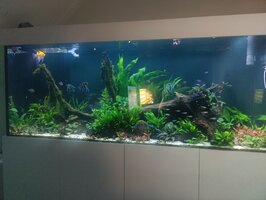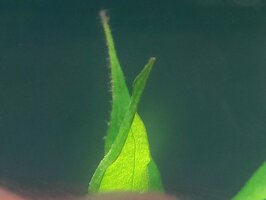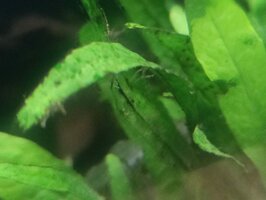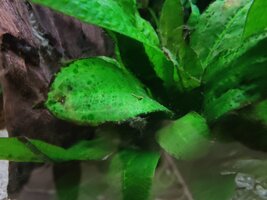nijat11
Member
1. 800 liters 180smx80smx55sm
2. 6 months
3. Sump; 1 chamber multiple multiple sponges, 2-3 chambers seachem matrix and biohome (total 35kg). seachem purigen.
4. WRGB. 14:00-22:00 (W:80%, B:80%, R:80%, G:50%) 22:00-23:00 (WBR:15%)
5. ADA Amazonia V2 and fine gravel
6. Installed 2 weeks ago. Controlled by PH controller + separate valve for night. During the day pH drops from 7.1 to 6.4. Drop checker get lime green.
7. Tropica Specialized every day 20ml and Tropica Premium every day 20 ml
8. Every 7-10 days 50%
9. Multiple cryptocorynes, multiple echnidoruses, multiple buchephalandras, Rotala Roundofolia, Rotala Orange Juice, Rotala Wallichni, Alternathera reckini mini, Alternather Cardinals, Golden Nesaea, Ludwiga Super Red, limnophila hippuridoides, multiple anubiases, Java ferns, Java moss.
10. Lime Green During the day.
11. Angelfish - 12; Rummy Nose Tetra - 30; Kardinal Tetra - 12; Black Neon Tetra - 10; Corrydoras Sterbai - 10; Corrydoras Panda -10; Apistograma Ramizeri -4; Apistograma Columbian -2; Apistogramma cacatuoides-2; Ancistrus -4; L333 - 2; L340-1; Nerite Snails - 10.
12. Please see the attached full tank image and plants with bba
So here is the story.
2 weeks ago I have introduced CO2 to my aquarium (using pH controller + additional valve and aquamedic reactor) and also I have stopped dosing Easy Life Carbo. Recently I have noticed that BBA started to grow on edges of most of my plants.
So I would like to ask.
1) Should I reduce the light?
2) Should I reduce fertilizers?
3) Should I start to dose Easy Life Carbo again?
4) Should I cut all infected plants?
5) Any other advises from you experience is much appreciated.
2. 6 months
3. Sump; 1 chamber multiple multiple sponges, 2-3 chambers seachem matrix and biohome (total 35kg). seachem purigen.
4. WRGB. 14:00-22:00 (W:80%, B:80%, R:80%, G:50%) 22:00-23:00 (WBR:15%)
5. ADA Amazonia V2 and fine gravel
6. Installed 2 weeks ago. Controlled by PH controller + separate valve for night. During the day pH drops from 7.1 to 6.4. Drop checker get lime green.
7. Tropica Specialized every day 20ml and Tropica Premium every day 20 ml
8. Every 7-10 days 50%
9. Multiple cryptocorynes, multiple echnidoruses, multiple buchephalandras, Rotala Roundofolia, Rotala Orange Juice, Rotala Wallichni, Alternathera reckini mini, Alternather Cardinals, Golden Nesaea, Ludwiga Super Red, limnophila hippuridoides, multiple anubiases, Java ferns, Java moss.
10. Lime Green During the day.
11. Angelfish - 12; Rummy Nose Tetra - 30; Kardinal Tetra - 12; Black Neon Tetra - 10; Corrydoras Sterbai - 10; Corrydoras Panda -10; Apistograma Ramizeri -4; Apistograma Columbian -2; Apistogramma cacatuoides-2; Ancistrus -4; L333 - 2; L340-1; Nerite Snails - 10.
12. Please see the attached full tank image and plants with bba
So here is the story.
2 weeks ago I have introduced CO2 to my aquarium (using pH controller + additional valve and aquamedic reactor) and also I have stopped dosing Easy Life Carbo. Recently I have noticed that BBA started to grow on edges of most of my plants.
So I would like to ask.
1) Should I reduce the light?
2) Should I reduce fertilizers?
3) Should I start to dose Easy Life Carbo again?
4) Should I cut all infected plants?
5) Any other advises from you experience is much appreciated.
Attachments
Last edited:







